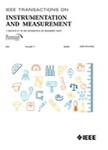版权所有:内蒙古大学图书馆 技术提供:维普资讯• 智图
内蒙古自治区呼和浩特市赛罕区大学西街235号 邮编: 010021

作者机构:Beihang Univ Sch Instrumentat & Optoelect Engn Beijing 100191 Peoples R China
出 版 物:《IEEE TRANSACTIONS ON INSTRUMENTATION AND MEASUREMENT》 (IEEE Trans. Instrum. Meas.)
年 卷 期:2024年第73卷
页 面:1-1页
核心收录:
学科分类:0808[工学-电气工程] 08[工学] 0804[工学-仪器科学与技术]
基 金:National Key Research and Development Program of China
主 题:High dynamic streaks local contrast map maximum likelihood estimation (MLE) onboard camera space object extraction
摘 要:With the development of aerospace technology, the increasing population of space debris has posed a great threat to the safety of spacecraft. Because of the small volume and long distance, space debris tends to have low signal-to-noise ratio (SNR), and while taking the limitations of ground observation methods into account, it is necessary to enhance the spacecraft s capacity for space situational awareness (SSA). Besides, the active search and long exposure time of the surveillance system will extend the star spot to be a streak-like target, making image enhancement and target extraction more difficult. Considering that traditional methods have some defects in low-SNR streak detection, such as low effectiveness and large time consumption, this article proposes a method for low-SNR streak extraction based on local contrast and maximum likelihood estimation (MLE), which can detect spatial objects with SNR 2.0 efficiently. In the proposed algorithm, local contrast will be applied for crude classifications, which will return connected components as preliminary results, then MLE will be performed to reconstruct the connected components of targets via orientated growth and the precision can be further improved. The algorithm has been verified with both simulated streaks and real star tracker images, and the average centroid error of the proposed algorithm is close to the state-of-the-art method like the optimal directional connected component (ODCC). At the same time, the algorithm in this article has significant advantages in efficiency compared with the ODCC. In conclusion, the algorithm in this article is of high speed and precision, which guarantees its promising applications in the extraction of high dynamic targets.